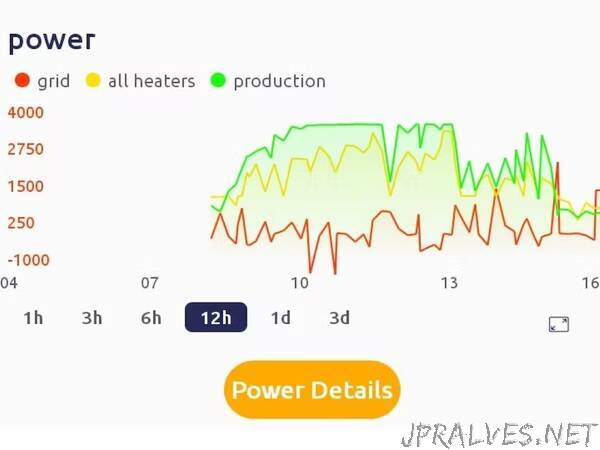
“Automatically feed all excess solar energy, and only excess, into existing electric heaters.
Your solar installation may send energy to the power company.
When you add solar to your grid-connected home, with the intend to consume your own production (i.e. self consumption), you will quickly realize that any solar energy not consumed by your home will go to the grid.
This is called “injecting”, or “exporting”. The energy injected is called “surplus” or “excess” solar.
There is nothing that can be done about it. Produced solar energy has to go somewhere..
A grid-tied solar system is designed to always operate at the maximum production capability of the solar panels, and cannot be “asked to slow down”.
Regulations about injection are country dependent. Injection can be allowed, tolerated, or strictly forbiden. In some countries you can get some money for the exported energy, in others you do not, and in some others you even have to pay to export!
The electricity grid was not designed with the idea of millions of tiny generation points, all injecting power at the same time (noon on sunny days). Grid operators are cautious about any effect of such injection on grid stability.
In France, where I live, injection from self-consumption installation is disallowed (there is some kind of tolerance for small amount of power).
Beside any regulatory issues, it is also a pity. Why invest in a solar installation to end up providing part of the production for free to the electricity company?
So how to maximize self-consumption?
Maximizing self-consumption
There are various ways to maximize self-consumption:
Manually turn-on energy-hungry appliances (eg washing machine, dryers, iron..) when it is sunny. This requires a bit a discipline, change of habits, and also some level of mental strength (ever felt the urge to start the dishwasher as soon as it is filled with filthy content ?)
Use surplus solar energy to heat the water tank, as opposed to using grid energy at night. This is by far the most common use of solar surplus and this requires the installation of a “solar router” (more on that later).
Of course, my family has been trained (brainwashed ?) to have the above discipline.
However, we are not always at home and moreover, my water tank is already heated with “thermal” solar (i.e. sun energy directly converted to heat water).
I live in the French Alps, and for half the year I need to heat the house. But what I want is a way to automatically feed all excess solar energy,and only excess, into existing electric heaters.
Here comes this automation application: solar2heater (Python on Raspberry PI. Available on github)
Solar router is good, but not enough.
Solar routers are devices which read the power flow between your house and the grid. As soon as energy is being exported, they divert it to a specific device, to consume exactly this amount of energy (no more, no less).
Those devices are typically used to power water heaters’ electrical resistance; thereby heating water with energy that, otherwise, would have been exported.
There are many models of solar routers. I am using the eddi from myenergi. I choose this device because it works hand in hand with my Solar Electric Car charger, but this is a subject for another article.”
